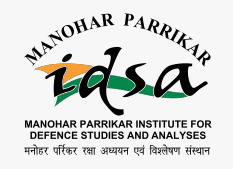
- This event has passed.
Monday Morning Meeting Report “Understanding Kashmir’s Agitational Dynamics”
January 20, 2025
Col. Dharmendra Yadav, SM, Research Fellow MP-IDSA, spoke on “Understanding Kashmir’s Agitational Dynamics” at the Monday Morning Meeting held on 20 January 2025. The session was chaired by Col. Rajneesh Singh (Retd.), Research Fellow MP-IDSA. Ambassador Sujan R. Chinoy, the Director General of MP-IDSA and scholars of the Institute attended the meeting.
Executive Summary
Security challenges in the form of civilian protests in Kashmir, erupted particularly from 2008 onwards. It was bolstered by the then sociopolitical conditions triggering unrest, incidents like the land transfer to Shri Amarnathji Shrine Board (SASB) in 2008, the Shopian case in 2009 and the killing of Burhan Wani in 2016, each exacerbating mistrust and radicalisation. Post-2016 has indeed been a transformative period marked by significant challenges and events. The political landscape has been tumultuous, with tensions arising from a variety of factors, such as political instability, the revocation of Article 370 and the rise in targeted killings. These developments have deeply impacted the region, leading to the need for comprehensive strategies to address the resulting issues. By focusing on these recommendations there is potential to mitigate violence in the region, i.e., emphasise political dialogue, youth engagement, countering propaganda, enhancing economic development, and fostering community involvement to diminish violence and promote stability.
Detailed Report
In his opening statements, Col. Rajneesh Singh provided an overview of the topic, highlighting the changing security challenges in the Kashmir Valley from 1989 to 2016. He underscored key milestones in the security landscape, starting with the 2008 transfer of 100 acres of land to the Shri Amarnath Shrine Board (SASB), followed by the 2010 unrest triggered by Tufail Mattoo’s killing and the 2016 neutralisation of influential Kashmiri terrorist Burhan Wani. He further elaborated on the various dynamics of agitational politics in Kashmir.
Col. Yadav commenced his presentation by outlining the historical context of security dynamics in Jammu and Kashmir. He provided a detailed examination of the factors contributing to unrest in Kashmir, the historical evolution of these agitations, and recommendations for addressing future challenges. He gave a detailed report on the escalation of agitations from 1987 to 2008, emphasising the region’s fragile political landscape, the rise of terrorism and Pakistan’s involvement in exacerbating the unrest. Key factors included cross-border support for militants, radicalisation, and propaganda through various networks.
Col. Yadav emphasised that since 2008, major agitations in Kashmir include several significant protests. In 2008, the land transfer to the Amarnath Shrine Board sparked polarising protests between Jammu and Kashmir. The 2009 Shopian alleged rape and murder case intensified mistrust against security forces, leading to prolonged demonstrations. In the summer of 2010, alleged fake encounters and the death of a teenager, triggered widespread urban protests. The 2016 killing of militant commander Burhan Wani catalysed large-scale rural protests, radicalisation, and violence.
Col. Yadav threw light on the agitational factors in the region that have been driven by recurring themes such as political instability, which undermines public trust in government institutions. Increased radicalisation among the youth, fueled by local grievances and external influences, has further aggravated tensions. Cross-border influences have played a significant role in perpetuating unrest, providing support and resources to radical elements. Additionally, social media has become a powerful tool for mobilising protests, enabling rapid communication and organisation among protestors. These factors altogether created a challenging environment for the armed forces and central government in maintaining peace and stability. According to Col. Yadav, since 2016, the region has experienced major developments including political instability marked by the collapse of political alliances, targeted killings of journalists and migrant workers, and the 2019 abrogation of Article 370, which has been perceived as a loss of autonomy and identity by a section of the population. Additionally, ongoing challenges like hybrid militancy, targeted attacks, and economic hardships exacerbated by the COVID-19 pandemic continue to affect the region. These developments collectively paint a complex and challenging picture of the region’s post-2016 trajectory, with ongoing issues that require nuanced and multifaceted solutions.
Discussing the way forward, he recommended that to address unrest, enhanced coordination among security forces is required and early warning systems need to be established to identify triggers for protests, and measures need to be taken to counter propaganda with effective narratives. He also suggested to engage youths through employment, education, and skill development, promote economic growth and infrastructure development, and strengthen community engagement to empower the silent majority against violent and false narratives. In his concluding remarks, Col. Yadav emphasised a multi-pronged approach that can integrate security, political dialogue, economic development, and community engagement to address the root causes of unrest in Kashmir and promote long-term stability.
Q&A Session
The floor was opened for questions and comments. The Director General MP-IDSA, Ambassador Sujan R. Chinoy complimented the speaker on his presentation. He highlighted several key points, including the current security situation in Baramulla and the shift of instability from the north to the south of the Kashmir Valley. He also discussed the changing nature of infiltrators, emphasising how they exploit funerals and public gatherings to further their agenda of radicalisation. He underscored the importance of addressing these evolving threats to maintain security and stability in the region.
Additionally, the session featured insightful remarks and a Q&A session with researchers from the institute. They explored various aspects of the security situational awareness in J&K and discussed its critical geopolitical and strategic significance.
The Report was prepared by Mr. Rohit Raj, Intern, South Asia Centre, MP-IDSA.



